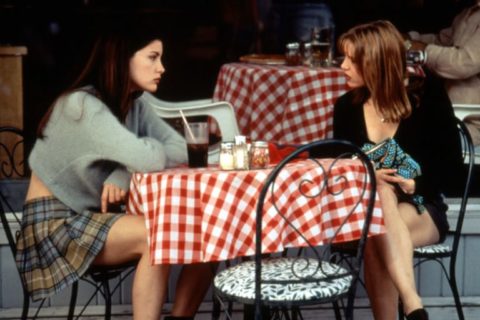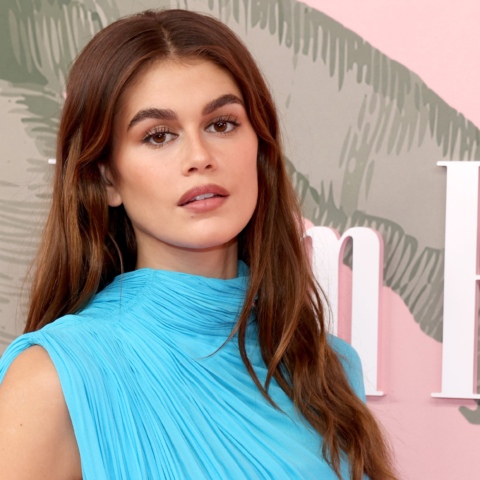Why 1995 was the most important year in pop culture

I was ten years old in 1995, which meant I was finally old enough to understand the impact of pop culture (like, sort of). Toy Story opened in December, and that summer, I’d started collecting Babe toys from McDonalds; school was defined by betting (and losing) my collection of Pocahontas and Casper Pogs, and Now and Then forever changed the way I approached female friendship. Cher Horowitz gave anyone with a penchant for pickiness a role model to aspire to be, while Empire Records…well, it made working in a record store look pretty cool.
Ultimately, 1995 was our generation’s most important year for pop culture. And our obsession with celebrating it (and all that it offered) 20 years after the fact is a testament to such.
Considering we’re obsessed with anniversaries and “Wanna feel old?” sentiments (although I do not want to feel old, so please let’s just stop it), 2015 couldn’t have been a better year on which to perch our nostalgia-fuelled hearts and minds. 1995—twenty years ago (just so we’re all on the same page)—set the bar for the way we consume culture (obsessively), as well as for our diverse tastes (the popularity of Billy Madison versus the likes of Sense and Sensibility), cult-like allegiance (Showgirls), and our affinity for nostalgia in general (The Brady Bunch Movie).
In fact, 1995 thrived off nostalgia. On top of blockbusters like Braveheart, Apollo 13, and Rob Roy — which were set in the past — the year celebrated franchises, reboots, and “Remember this?!” set-ups. Sabrina (a remake), A Goofy Movie, The Mighty Morphin Power Rangers (don’t you dare forget), Jumanji, Casper, Batman Forever, and James Bond: Goldeneye opened and arguably developed our tastes for taking a modern approach to something old and familiar. 1995 taught us to look at the past and then try to make it better — which we’re doing, currently. It taught us that everything we loved could be remade in a context that we’d understand better thanks to “modern twists” and relatable values. After all, Casper could’ve remained a cartoon and been a perfectly fine children’s film, but when he morphed into Devon Sawa at the end, we understood that he was real (and that he was a major babe) and that we,as pre-teens, had a reason to watch it. We also understood that, thanks to the advent of mid-nineties technology and new casting, the New and Improved™ James Bond (Pierce Brosnan) could save a lukewarm franchise (which he did), and that Jumanji was more than a kids’ book, it was a goddamn adventure.
But in addition to making us seem like we could improve the past by making our own marks on it, 1995 also gave us a new bar to strive for in terms of smart and interesting characters. Now & Then arguably set up the trope Sex and the City adopted four years later (“the sporty one,” “the mysterious one,” etc.), and Clueless and Sense and Sensibility re-introduced audiences to Jane Austen and her independent and compelling brand of lead heroines.
Clueless’ Cher (who was modern-day Emma) was privileged, but she was also kind; she was shallow, but her happiness also came from those around her being happy, too. And instead of seeing women in competition, Clueless allowed us to watch Cher, Dionne, and Tai band together to become the best versions of themselves with no shade thrown. It also further married the worlds of movies, music, and fashion thanks to the popularity of both Clueless, its soundtrack, and the rise of Cher-sanctioned brands (like Alaïa and Calvin Klein).
Empire Records had the same effect. But where Clueless was bright, shiny, and included an appearance by the Mighty Mighty Bosstones, Empire Records celebrated the likes of Gwar and human flaws (plus Doc Martens and kilts), proven by Cory’s speed addiction, Gina’s fear of turning into her mother, and Deb’s suicidal tendencies. It tanked at the box office, but like its equally poorly received counterpart, Showgirls, it found a cult audience who celebrated it for its depiction of unique characters who wouldn’t have gotten along so well with Bronson Alcott’s shiny happy, people.
Because that’s the other thing about 1995: some of the most popular cultural offerings were also far from the carefree nature of feathers, faux fur, and the wardrobes of celebrated teens. (Just look at bands like Bush, Radiohead, and NIN.) In fact, the year made space for an array of fictional people, all of which helped deliver game-changing movies like Se7en, The Usual Suspects, and The Basketball Diaries, all of which blurred lines between right, wrong, and good and bad. And this taught us to ask the same from the movies we see now.
Of course, upon the release of these movies, I had a mushroom cut and spent most of my nights lipsyncing to “Just Around the Riverbed” while pretending my bed was a canoe. But looking back, I know now why 1995 has been such a celebrated and important year (Pocahontas soundtrack aside). In addition to laying the groundwork for the tastes we currently have, it was a year that took risks, that assured us that anything old could be made better by us (which 100% isn’t always true — but something’s got to explain all those Ninja Turtle movies), and that told us that interesting, multi-dimensional characters could exist.
So let’s hope — now, in the throws of throwback culture — that 1996 fared as well.







